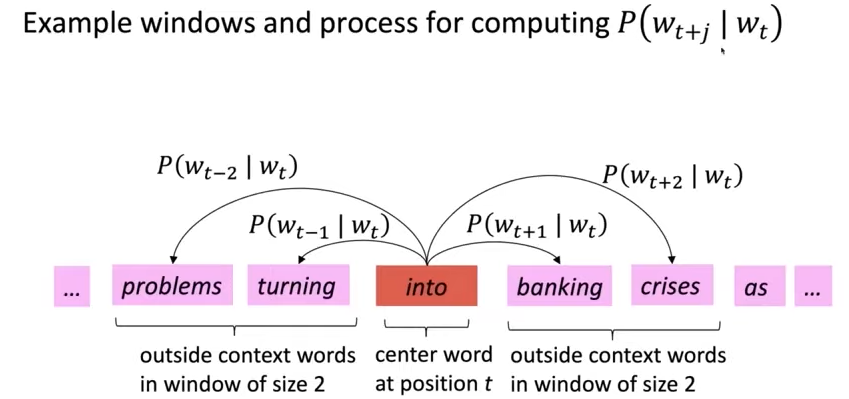Lecture 1: Introduction and Word Vectors
The result that word meaning can be represented rather well by large vector of real numbers.
1. The course
- fundamental knowledge
- Advanced Technology
- practise: PyTorch
2. Human language and word meaning
How to get computers to understand language.
How do we present the meaning of a word?
- symbmol $\Leftrightarrow$ idea or thing
- denotational semantics
Traditional NLP solution:
- WordNet, a thesaurus containing lists of synonym sets and hypernyms
- great as a resource but missing nuance
- only correct in some contexts
- missing new meanings of words
- impossible to keep up-to-date
- subjective
- requires human labor to create and adapt
- can’t compute accurate words similarity
- great as a resource but missing nuance
- one-hot vectors
- regard words as discrete symbols
- HUGE vector dimensions
- no natural similarity for one-hot vectors
Solution
- learn to encode similarity in the vectors themselves
- Distributional semantics: a word’s meaning is given by the words that frequently appear close-by
- When a word $w$ appears in a text, its context is the set of words that appear nearby(within a fixed-size window)
- Use the many contexts of $w$ to build up a representation of $w$
Word vectors
- We will build a dense vector for each word, chosen so that it is similar to vectors of words that appear in similar contexts.
- Word vectors are also called word embeddings or (neural) word representations. They are a distributed representation.
3. Word2vec introduction
Word2vec (Mikolov et al. 2013) is a framework for learning word vectors.
Idea:
- We have a learge corpus (“body”) of text
- Every word in a fixed covabularty is represented by a vector
- Go through each position $t$ in the text, which has a center word $c$ and context (“outside”) words $o$
- Use the similarity of word vectors for $c$ and $o$ to calculate the probability of $o$ given $c$ (or vice versa)
- Keep adjusting the word vectors to maximize this probability.
4. Word2vec objective function
Goal
For each position $t = 1,…,T$, predict context words within a window of fixed size $m$, given center word $w_j$. Data likelihood:
\[\textrm{Likelihood} = L(\theta) = \prod_{t=1}^T\prod_{-m\le j\le m \& j\not ={0}} P(w_{t+j}|w_t;\theta)\]$\theta$ is all variables to be optimized $\prod_{t=1}^T$: using each wor as a center word
Objective function
The objective function(cost function, loss function) $J(\theta)$ is the (average) negative log likelihood
\[J(\theta) = -\frac{1}{T} \log L(\theta) = -\frac{1}{T}\sum_{t=1}^T\sum_{-m\le j\le m \& j\not ={0}} \log P(w_{t+j}|w_t;\theta)\]Minimizing objective function $\Leftrightarrow$ Maximizing predictive accuracy
- $v_w$ when $w$ is a center word
- $u_w$ when $w$ is a context word
- Then for a center word $c$ and a context word $o$ (softmax) \(P(o|c) = \frac{\exp(u_o^Tv_c)}{\sum_{w\in V}\exp(u_w^Tv_c)}\)
softmax function maps arbitrary values $x_i$ to a probability distribution $p_i$
- $\mathbb{R}^n \rightarrow [0, 1]^n$
- “max” because amplifies probability of largest $x_i$(but returns a distribution)
- “soft” because still assigns some probability to smaller $x_i$ Frequently used in Deep learning
